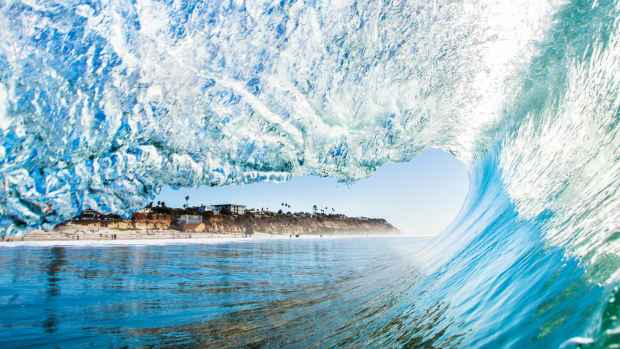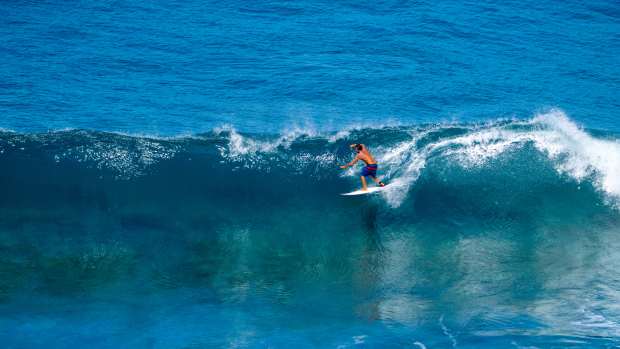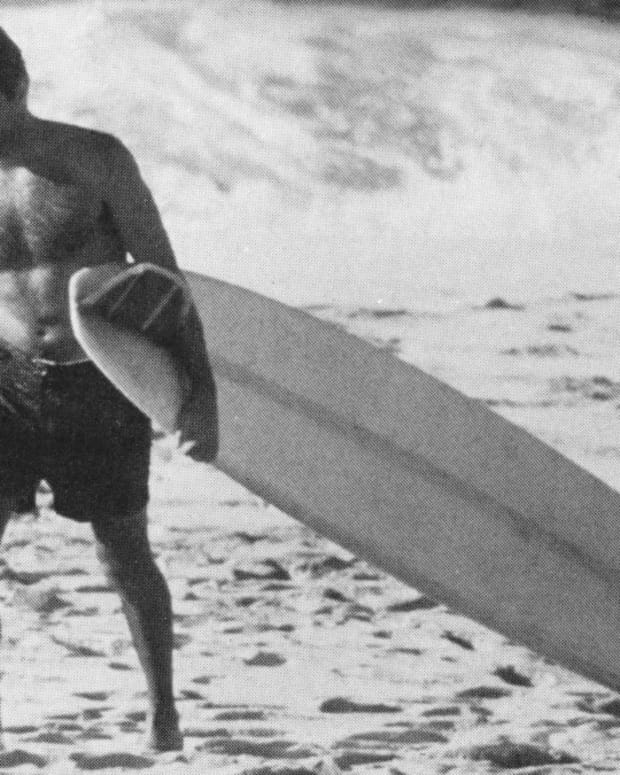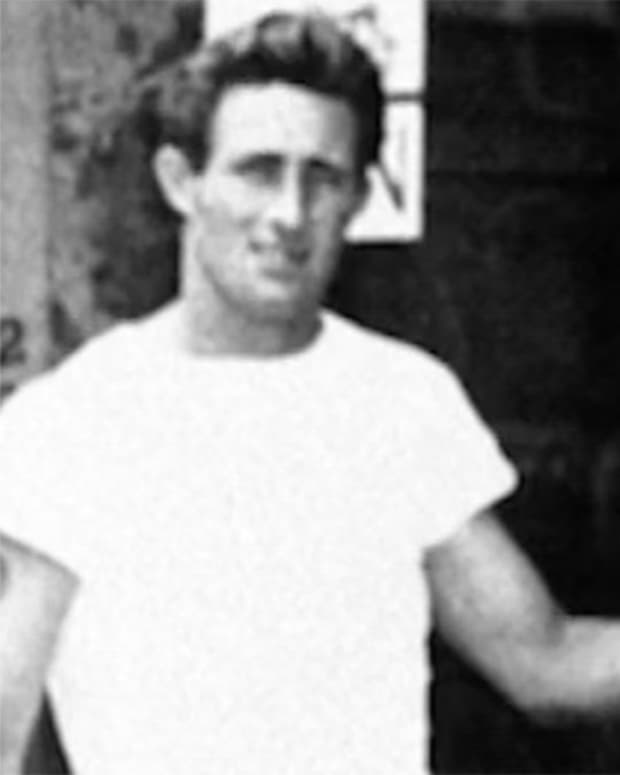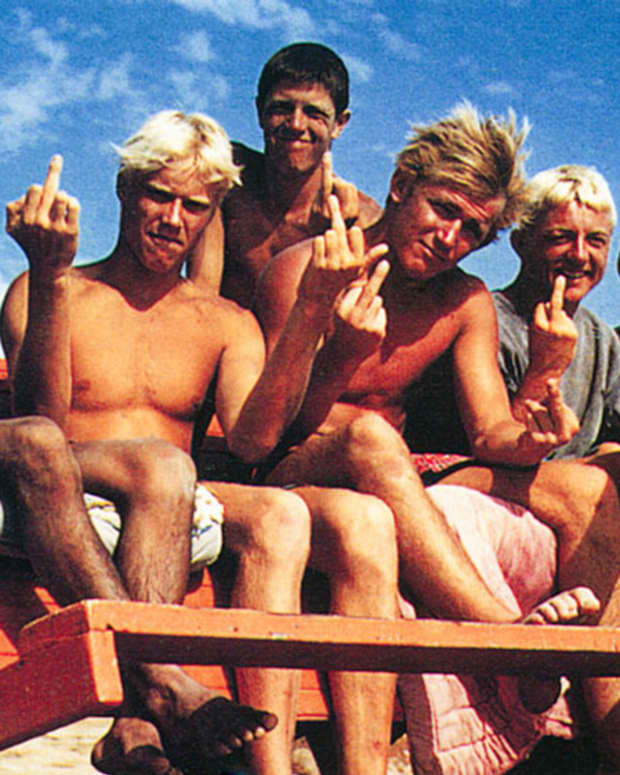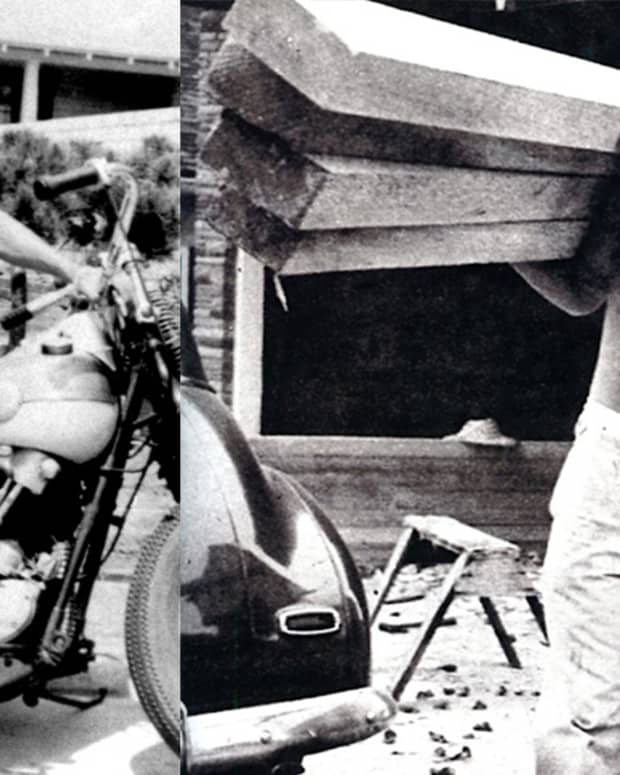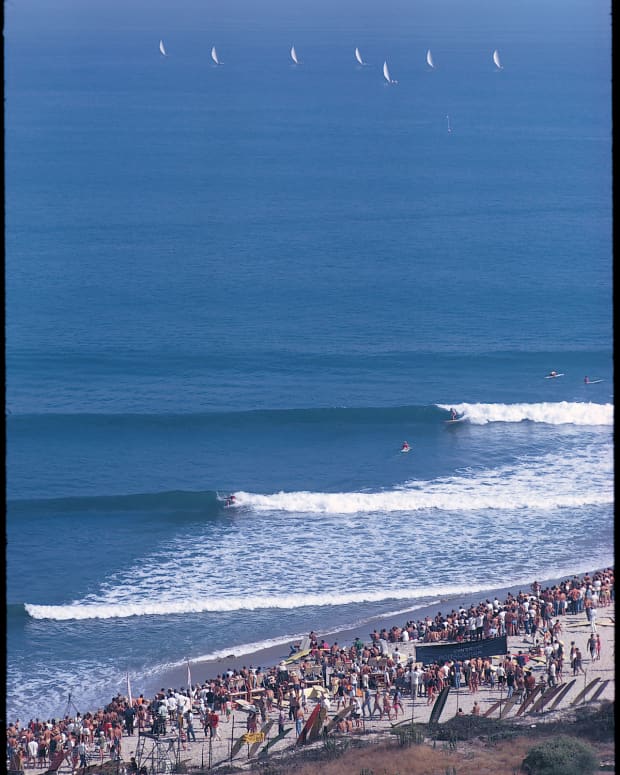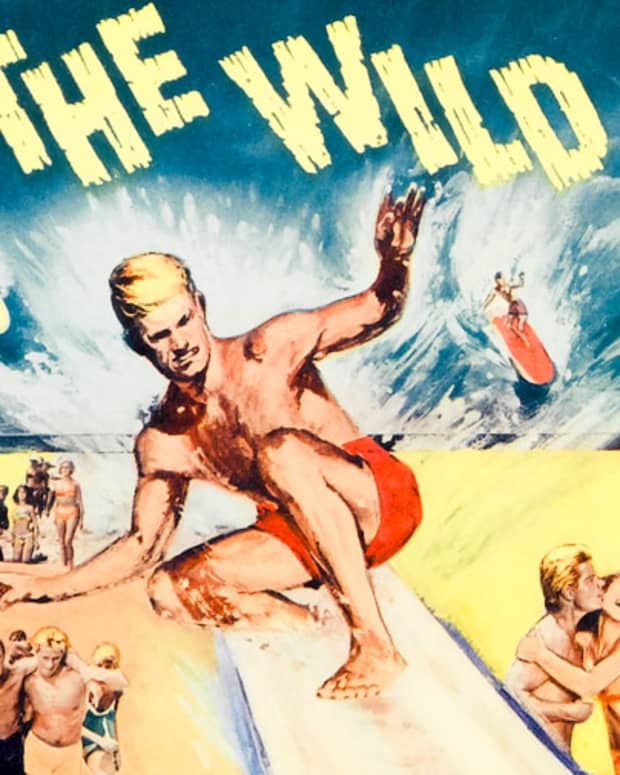History Of Surfing: Gidget, The All-Powerful
"See you around, Gidget!"
So yelled Tubesteak Tracy to 15-year-old Kathy Kohner on a Malibu summer day in 1956, a year before the combined nickname of "Girl" and "Midget" would read in a best-selling work of fiction, and three years before the silver screen made it nationally synonymous with a different American Dream: one of youthful freedom and limitless leisure in post-war lineups. Matt Warshaw's newest History Of Surfing chapter rolls back the red carpet, before Gidget's Hollywood premiere doubled the mainland's surfing population four times over, to when a surf-crazed girl would return home from Malibu and gush to her writerly father. Warshaw explains in HOS:
Kohner learned to surf by trading peanut butter sandwiches—made herself in the kitchen of her family’s airy suburban ranch house in nearby Brentwood—for the use of whatever board was lying around Tubesteak’s palm-frond Malibu beach shack. She had schoolgirl crushes on some of the Malibu surfers, but the mostly all-male gang viewed her as a mascot, not a love interest. By the end of summer she had her own board and had developed into a competent surfer. Claire Cassidy, Robin Grigg, Vicki Flaxman, Aggie Bane, and the rest of the original postwar Malibu girls had moved on, so Kohner was often the only female in the lineup. Back home, she talked incessantly about her surfing experiences, and at one point told her father that she was going to write a book about it. Frederick Kohner smiled, heard a little bell go off in his head, and offered to write it for her.
[READ THE FULL HISTORY OF SURFING CHAPTER HERE]
We asked Warshaw about Kohner, the qualities that made Gidget's book and film an instant hit, and the auguries of surf's roaring popularity.
In 1994, Los Angeles Magazine wrote that, "It was Gidget, along with the Beach Boys, who gave surfing its most memorable turn in the great American youth culture parade." How much was Gidget's '59 movie premiere a lone cultural sensation, and how much was its success boosted by other surf-culture milestones of the era?
There’s an old surf movie -- I think it’s one of Greg Noll’s -- and it’s got a pulled-back shot of Malibu from 1957, and the lineup is totally jammed. That goes against what we all think of in terms of Gidget, the movie, sounding the bugle and sending ten-million Valley kids over the hill and into the lineup. Surfing before Gidget already had a lot of momentum. It was always going to be a thing. Still, Gidget meant “surfing” to a lot of people the way John Travolta meant “disco” after Saturday Night Fever. She put a face on it. And yes, the movie no doubt sped things up in terms of popularity. But surfing itself was on its way, Gidget or not.
Give us a brief introduction of the original Malibu girls, pre-Gidget: Claire Cassidy, Robin Grigg, Aggie Bane, and Vicki Flaxman.
They were so young, like 15 or 16, when they first got to the Malibu, and ready to mix it up in the water. It helped a lot that there was a little crew of them, as opposed to just one. Gidget in that sense had it way harder, as she was kind of a female solo act. Of that first group, Flaxman, I think, was the hardest-charging surfer. She was really athletic, took no shit, surfed all the time. Gidget, by comparison, was a dilettante. The other thing that group had going for it was that Malibu wasn’t as rough-and-tumble as it was later in the ‘50s. The first people Gidget runs into at Malibu is Tubesteak and his henchmen, and she got hazed and heckled that whole first summer. Aggie and Robin and Vicki and the rest, they were on the beach with Matt Kivlin and Joe Quigg and Tommy Zahn, who weren’t choirboys, but were for sure more gentlemanly—especially compared to Tubesteak and Miki Dora and the rest of the Gidget-era crew.
In the Encyclopedia of Surfing, you mention that the mid-'60s and early-'70s was an era of "pulp surfing fiction." What did these books try to tap into that made Gidget a hot-seller, and how successful were they?
That didn’t really have anything to do with Gidget, the book or the movie. The book Gidget is just straight-up first generation Young Adult Novel, and it’s really good when you take it that way. Fritz Kohner was an excellent writer, and he pulled off an amazing feat by getting into the head, and finding the voice, of a frothing 16-year-old girl getting stoked on surfing. Pulp books were the movie version of those B-movies coming out at the same time: Hot Rod Gang, Swamp Women, Wild Angels, like that. Success-wise, I don’t think any single pulp book did crazy sales, but they were super cheap to make, writers banged ‘em out in like a week, you’d slap a lurid cover on it, shit it off, sell a few thousand, and the game was to just pump ‘em out one after the next.
[SUPPORT YOUR SURF HISTORY. CLICK HERE TO DO IT]
What qualities of Gidget made the movie more digestible to a general audience than other, earlier surf movies? Or, put another way, what were earlier movies lacking that Gidget had, besides the Hollywood production value?
Gidget was the first Hollywood surf movie. Everything before, in terms of “surf movies,” was a whole different genre. Bud Browne, Bruce Brown, Greg Noll, John Severson. Movies you’d see at the local Elks Club, with Bud or Bruce or Greg running the projector and doing live narration. All surf, no plot. Gidget played in real theaters, had a story arc, and cost more than every Bud Browne movie put together times 100. There’s not much actual surfing in Gidget. Just a few pulled-back shots of Dora and Mickey Munoz and a few other real-life Malibu rippers all on the same wave, then of course those awesome blue-screen closeups of James Darren and Cliff Robertson and Sandra Dee, all spritzed down, pretending to balance on their boards while a superimposed wave breaks way off in the distance behind them. Robertson has a cigar jammed in his mouth while he’s riding. It’s fantastic.
Dora and Munoz and a lot of other famous surfers were all stunt doubles in the film adaptation. How did they feel about contributing to the spread of public surf fever?
At the time, they didn’t give it a second thought. Free lunch on the set, plus $25 a day, or whatever the day rate was for non-union stunt work. They were stoked.
And so after the book and movie brought the masses to the beach, surfing's fight against sexism was finished, right?
Gidget is the most famous surfer of all time, but sexism apparently is forever.
For more, visit the History Of Surfing website here. Missed a HOS chapter? Click here.

